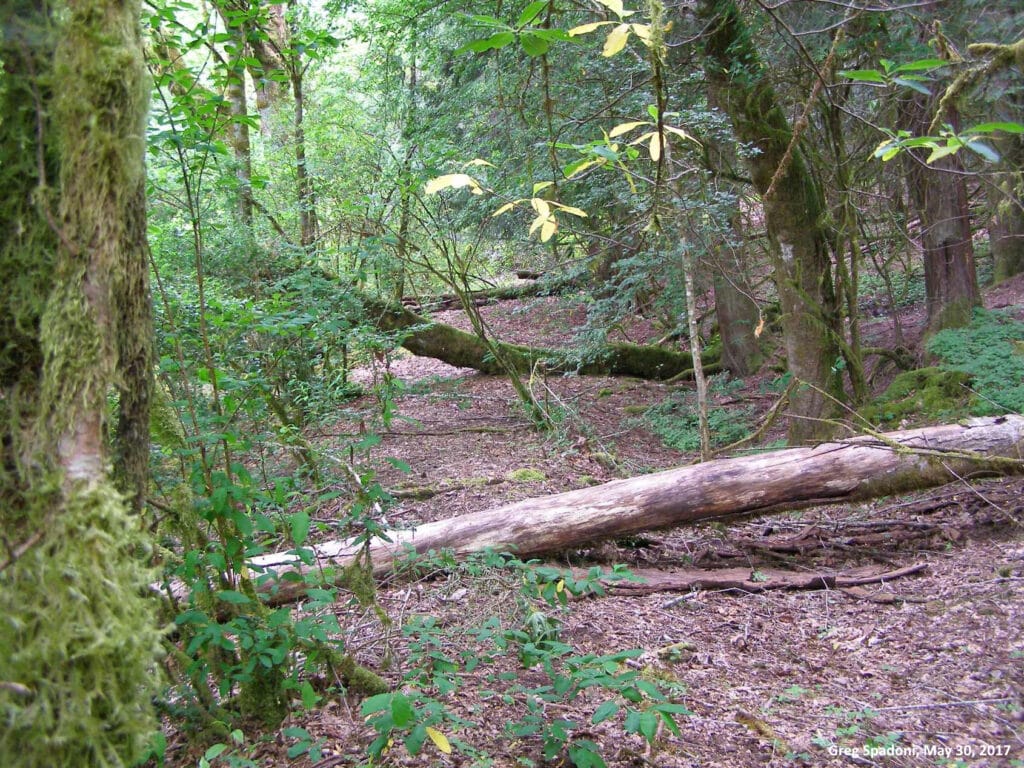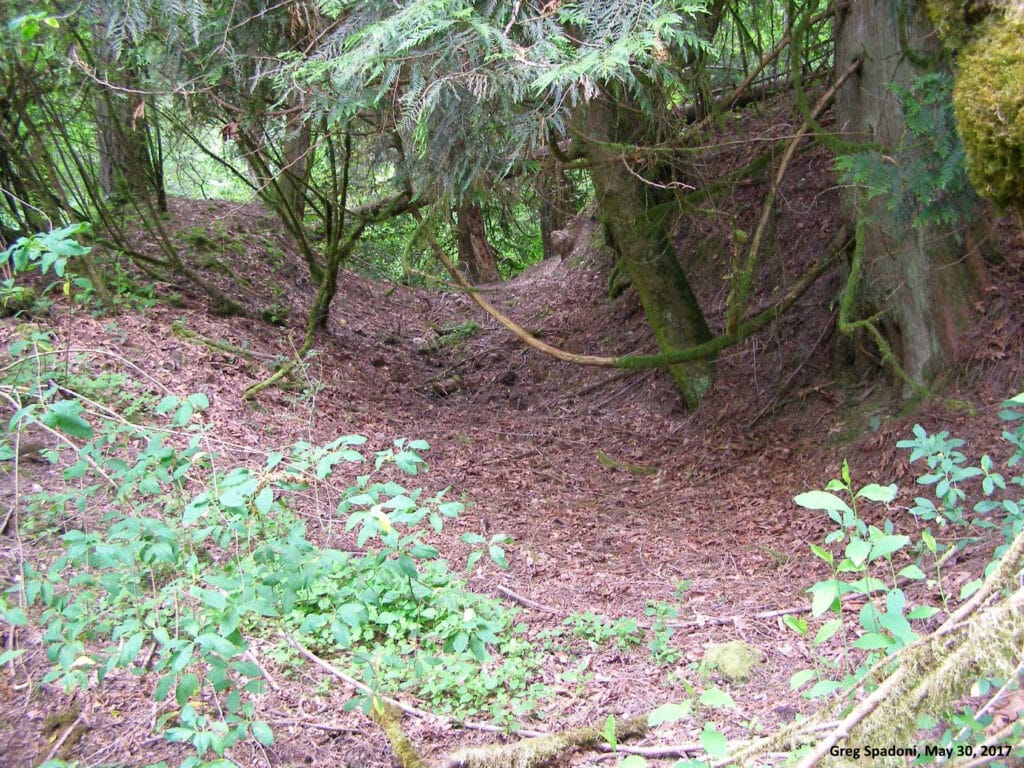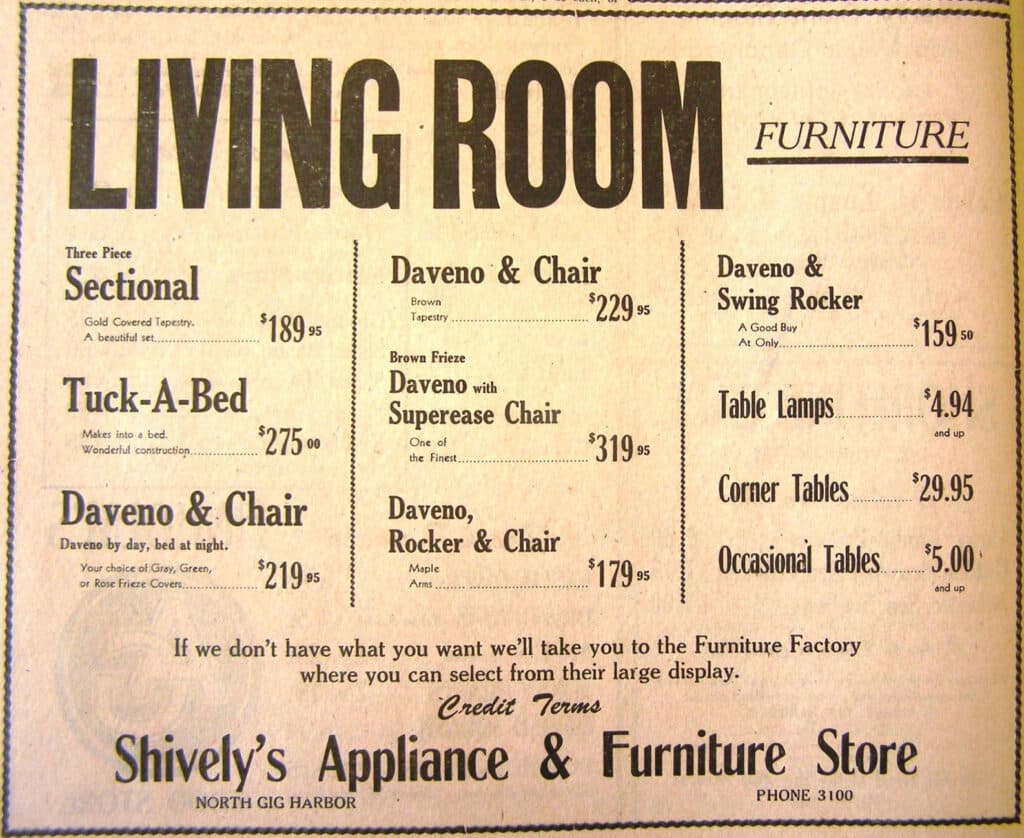Arts & Entertainment Community
Gig Harbor Now and Then | A century later, you can still find signs of the peninsula’s old logging railroads
There is a certain allure concerning the long-ago logging railroads on the Greater Peninsula. The very idea of slow, geared-down steam locomotives chugging through the local old-growth forests over a hundred years ago spurs the imagination. But where were the roads?
Arts & Entertainment Sponsor
Arts & Entertainment stories are made possible in part by the Gig Harbor Film Festival, a proud sponsor of Gig Harbor Now.
With ever-increasing development on the peninsulas, fewer and fewer sections of railroad grades remain. But there still are some, though mostly in rougher terrain that is more expensive to turn into a housing project than easier ground. More than a hundred years after they were abandoned, they are not easy to recognize.
One of the problems with identifying surviving pieces of railroad beds is that they’re mostly in the woods, overgrown by well established second-growth forests. They can’t be easily seen from public roads. And we certainly don’t advocate for tromping through private property looking for them.
While we know a great many of the properties logged by rail, the exact locations of the surviving railroad beds are very difficult to determine. Roads built later for logging trucks in pursuit of second-growth trees in the same forests far, far, far outnumbered roads for locomotives, greatly complicating the search.
But it is sometimes possible, even today, to determine which overgrown roads in the woods are from the railroad logging era. Roads for logging trains were built differently than for trucks. Those differences, though subtle, can still be seen if you know what to look for.
One of the remaining logging train roads
A specific stretch of the Gig Harbor Timber Co.’s railroad is a perfect example. It’s easy enough for most people to recognize it as an old road of some sort. But when I found it, I knew in an instant that it was a railroad bed. For one thing, I already knew where to look.
But it was the way in which the road was built that identified it as a railroad grade, not a later road made for trucks. Having built many roads through the woods over many years, with bulldozers, it was obvious to me that this grade had been built entirely by hand by a crew of men with shovels. No bulldozer would’ve done it that way.

This is a short section of the Gig Harbor Timber Co.’s railroad more than a hundred years after it was abandoned. Because it’s being reclaimed by nature, it’s rather difficult to see. Having built roads through the woods for years, and knowing the subtle differences between old railroads and truck roads, I had a clear advantage when searching for this one. Photo by Greg Spadoni.

The continuation of the Gig Harbor Timber Co.’s railroad bed in the previous picture ends just beyond this cut, where a trestle once began. There is no longer any trace of the railroad bridge. Photo by Greg Spadoni.
Railroad crossings
Even when they still exist, old logging railroad grades in the woods are hard to find, but what about crossings? Daily, thousands of Peninsula people pass over the invisible bumps where railroad tracks crossed existing state and county roads. Were it not for the separation in time, many of those travels through the exact same physical space would result in a collision with a steam locomotive or one of the flatcars it towed. (Explain that to your insurance agent: “I T-boned a logging train in a time warp.”)
If you’ve driven from Purdy to Key Center, you’ve bumped over a logging railroad crossing. If you’ve gone from Purdy to Gig Harbor, you’ve passed over one or more spots where logging railroads used to cross. South Rosedale’s logging locomotive crossed or passed over current county roads in more than one place. The Gig Harbor Timber Company’s tracks crossed what is now Crescent Valley Drive several times.
We can get pretty close to locating many of the old railroad crossings, but not precisely. We know the exact location of one of them, however.
Gig Harbor’s Southern Cross
In addition to Crescent Valley Drive, the Gig Harbor Timber Company also crossed Peacock Hill Avenue with its railroad, in two places. Everyone who’s ever traveled the road from Gig Harbor to 144th Street has passed over both. The location of the northern one can’t be narrowed to less than a couple hundred feet, but the very spot of the southern crossing is known. That’s the topic of this week’s question:
Where was the southern crossing of the Gig Harbor Timber Company’s logging railroad on Peacock Hill Avenue?
We’ll have the answer on Aug. 12.
To anyone who’s had a supernatural feeling when unknowingly passing through the historical railroad portals on Peacock Hill Avenue, did you ever suspect it was the vibrations from a 42-ton Shay steam-powered logging locomotive?
Peninsula logging railroads
There was a small variety of logging railroads on the Gig Harbor and Key Peninsulas, all of them during the first quarter of the 20th century — that we know about, anyway. The variety was in ownership, location and equipment type. Some of the operations were so small and fleeting that little or nothing is known about them today.
More is known about the logging railroad of the Gig Harbor Timber Co. than any other on the Gig Harbor and Key peninsulas. A LOT more. This is — to me, anyway — by far the most interesting story in all of local history. It has good guys, bad guys, worse guys, honest guys, smart guys, dumb guys, hard workers, non-workers, crime, lies, conspiracy, theft, hubris, deception, posturing, bluffing, greed, lawsuits, countersuits, perjury, desperation, embarrassment, immigrants, illiterates, accidental death, an uncooperative log market, a terrible human fate, poetic justice, bridges, trestles, the longest pier in Gig Harbor history, and a really cool wood-fired locomotive.
It also has a hero. Well, actually two: one during the logging, and one after. Both were non-locals, but easy to cheer for anyway. And believe it or not, one of them was a lawyer. Yes, a lawyer!
The primary dirtbag villain was a local, though. Gig Harbor has had its share of those, but their stories, and infamy, have mostly been lost by succeeding generations. Not in this case. He left a wide trail of rotten behavior, before, during, and after the logging railroad episode. Accounts of much of it can still be found today, though it’s pretty well tucked away, which doesn’t make it easy.
While the bad guys didn’t necessarily get what was coming to them, at least they didn’t get everything they tried to put their grubby mitts on. And watching them get outworked and outsmarted by the heroes time and time again is very satisfying.
It’s a big story with a surprising degree of detail. I’ve written over 300 pages on the Gig Harbor Timber Company, and it’s still not finished.
Furniture talk
Back in May of this year, I was reminded of the word daveno. I read it in a 1952 issue of The Peninsula Gateway. The word was quite common in this area at the time. I had always assumed it was a shortened version of another fairly common word, davenport. I’m still assuming it.
The day I saw the word was the same day I was scheduled to see the editor of Gig Harbor Now, Vince Dice, and columnist Tonya Strickland. To see if daveno has completely died out as a known word, I asked them if they were familiar with it, or davenport. No and no, from each.
There is always a danger of claiming that something unheard of today used to be common. People who are unfamiliar with it might think you’re making it up. Or even worse, are hallucinating it. To prove that neither is true in this case, I have since found another mention of the word, again in a 1952 issue of The Peninsula Gateway. In fact, it mentions daveno six times. That’s even more common than I thought.
- Daveno & Chair (Daveno by day, bed at night.)
- Daveno & Chair
- Brown Frieze Daveno with Superease Chair
- Daveno, Rocker & Chair
- Daveno & Swing Rocker

Shively’s Appliance & Furniture Store in Gig Harbor had an impressive variety of davenoes for sale. This advertisement in the September 12, 1952, Peninsula Gateway was found in the Harbor History Museum.
What is a daveno? From Wikipedia: Davenport was the name of a series of sofas made by the Massachusetts furniture manufacturer A. H. Davenport and Company, now defunct. Due to the popularity of the furniture at the time, the name davenport became a genericized trademark in parts of the United States.
A similar word, Daveno, also refers to a sofa or couch. The term was more widely used in the 1950s and 1960s, particularly in the Pacific Northwest.
See? I didn’t make it up. I wasn’t hallucinating it, either (this time, anyway).
Looking forward
We’ll have the location of the Gig Harbor Timber Co.’s southern crossing of Peacock Hill Avenue on Aug. 12. In the meantime, go ahead and stretch out on your daveno and daydream of wood-fired steam locomotives slowly chugging their way through the old-growth forests of the Peninsula on a lazy, warm summer day. The lullaby effect will put you to sleep in no time … until the whistle punk grabs that wire and blows you off the davenport.
– Greg Spadoni, July 29, 2024
Greg Spadoni of Olalla has had more access to local history than most life-long residents. During 25 years in road construction working for the Spadoni Brothers, his first cousins, twice removed, he traveled to every corner of the Gig Harbor and Key Peninsulas, taking note of many abandoned buildings, overgrown farms, and roads that no longer had a destination. Through his current association with the Harbor History Museum in Gig Harbor as the unofficial Chief (and only) Assistant to Linda McCowen, the Museum’s primary photo archive volunteer, he regularly studies the area’s largest collection of visual history. Combined with the print history available at the Museum and online, he has uncovered countless stories of long-forgotten local people and events/

